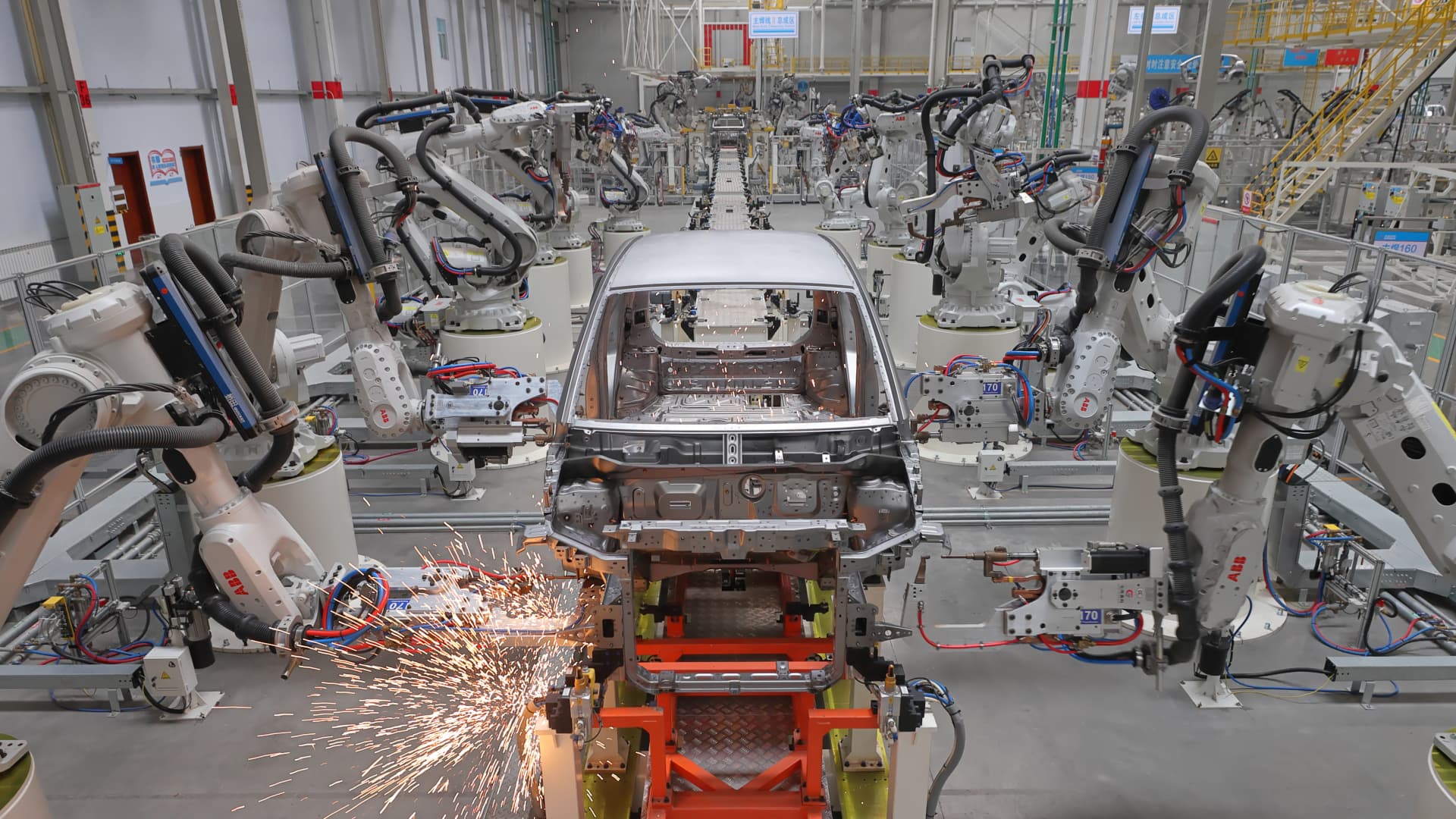
BEIJING — Several economists expect that China will avoid a Japan-style stagnation — if the right policies take effect.
China’s gross domestic product barely grew in the second quarter while Covid lockdowns stifled growth. Those restrictions have eased. But Covid controls remain an uncertain overhang while the country awaits a quarterly gathering of policymakers expected at the end of the month.
But even if Covid restrictions ease, China still has untapped growth potential for the next few years, the economists said.
For one, the country’s income levels — and theoretically spending — have much room to grow.
China’s per capita GDP in 2021 was less than a fifth of that in the United States, and adjusted net national income per capita was about one-seventh of that in the United States, according to World Bank data.
“Given the room for catch-up is still there, China’s still going to maintain 4% to 5% growth in the next five to 10 years,” said Larry Hu, chief China economist at Macquarie. He said there are uncertainties that could affect his estimates, including whether China can shift from relying on investment to consumption for growth.
Another area of potential is China’s plan to unify business standards and access within the country, said Dan Wang, Shanghai-based chief economist at Hang Seng Bank China. “Once those barriers can be lifted … that can increase income by a great deal.”
She noted how current practice can favor a company from a local city over one from another province. A stark example of these regional biases played out this year when different Covid rules among provinces created inefficiency, she pointed out.
Wang said overseas demand and increased investment in manufacturing in China could support growth in the coming years.
Much of the country’s official economic narrative has emphasized the “unexpected” impact of Covid and the “Russia-Ukraine conflict,” while pointing out that inflationary pressures are far higher in countries like the United States.
When asked whether China would face Japan-style economic stagnation, Bank of China chief researcher Zong Liang dismissed the possibility. He said China has, among other things, kept control of its currency, while Japan’s yen has fluctuated too quickly.
Zong also pointed to China’s investment and self-reliance in tech innovation. As for economic growth in the near term, he expects stimulus announced in May to take effect in the third or fourth quarter, and some benefit from increased trade under new regional free trade agreements.
However, Zong said China does face similar challenges to Japan when it comes to the housing market.
Beijing has tried to clamp down on speculation in the market in the last few years. But an underlying, more difficult problem for real estate is the aging population, a problem “that deserves our attention,” Zong said in Mandarin, according to a CNBC translation.
Consumption problem
Others, however, are less optimistic.
“China has an even more extreme version of the Japanese imbalances,” making it harder to rely on consumption for growth, said Michael Pettis, a finance professor at Peking University, in an email.
Japan’s economy has stagnated, generally growing more slowly than the U.S. and China since the 1990s, following the burst of a bubble in stocks and real estate.
Japan grew rapidly in the 1970s and 1980s thanks to high growth in exports and infrastructure investment, but by the early 1990s the country was increasingly investing in wasteful projects, said Pettis.
He said Japan has not been able to turn to its consumers to drive growth — primarily because the manufacturing sector has not been able to accept the needed transition to higher wages.
China won’t necessarily follow Japan’s path — if China can make substantial changes to its political institutions, Pettis wrote in April.
But he said the more likely scenario is that China doesn’t enter a financial crisis or sharp economic crisis, and instead is more likely to “face a very long, Japan-style period of low growth.”
If nonproductive investment — primarily in infrastructure and property — is reduced and not replaced with an equivalent source of growth, Pettis estimated China’s GDP would grow by no more than 2% or 3% annually in coming years.
Covid drag
For this year, many investment banks have slashed their China GDP forecasts to below 4% in light of the country’s zero-Covid policy.
“Economists can’t resolve this issue,” said Xu Hongcai, deputy director of the Economics Policy Commission at the China Association of Policy Science. That’s according to a CNBC translation of his remarks in Mandarin.
Xu struck a pessimistic tone, noting that monetary policy and fiscal policy may contribute little, and that increasing their scale would only add to longer-term problems.
Troubles in China’s massive real estate sector have also resurfaced this month, with many homebuyers refusing to pay their mortgages until developers find the resources to finish constructing apartments.
More state support?
Ultimately, however, China’s economy may have to turn to its government for help.
After warning of the risks from excessive government support in his 2016 book “China’s Guaranteed Bubble,” author Zhu Ning said last month the best solution to unemployment and housing bubble problems is increased state support.
“The situation in Japan may actually be a reason to warrant some more planning economy approach,” said Zhu, professor of finance and deputy dean at the Shanghai Advanced Institute of Finance. “[I] cannot think of a market-based approach.”
He said that just as Japan built up its social safety net during a bubble period, China should put more resources into ensuring three basic needs: housing, health care and education.
Relieving Chinese consumers of those costs could encourage them to spend, Zhu said.




